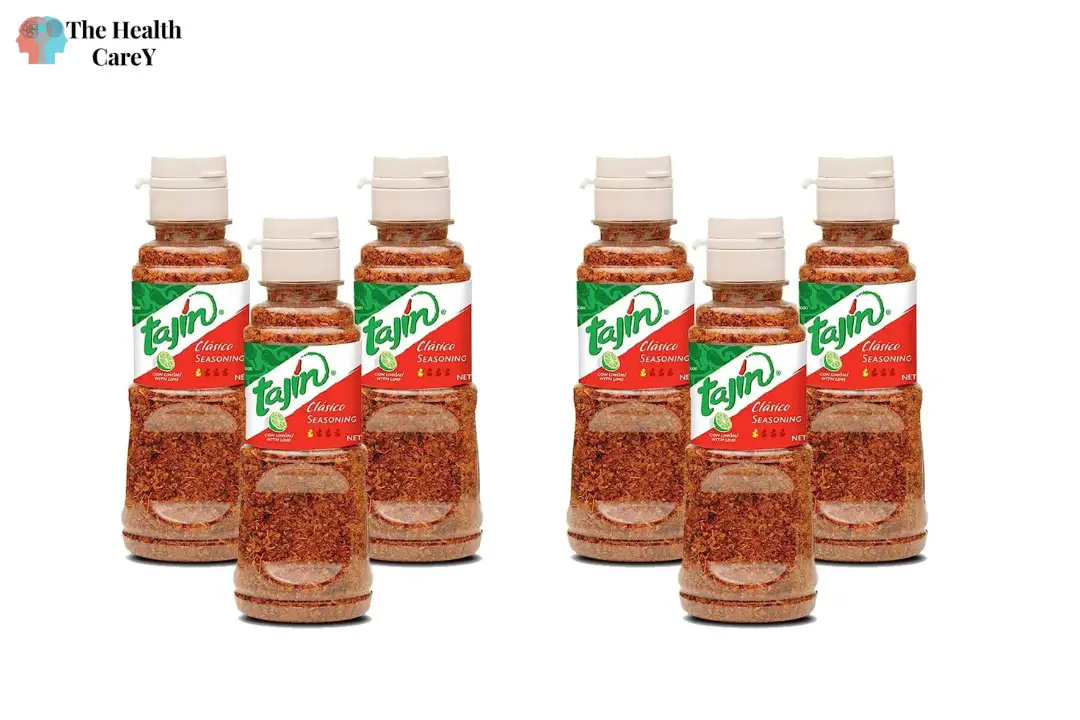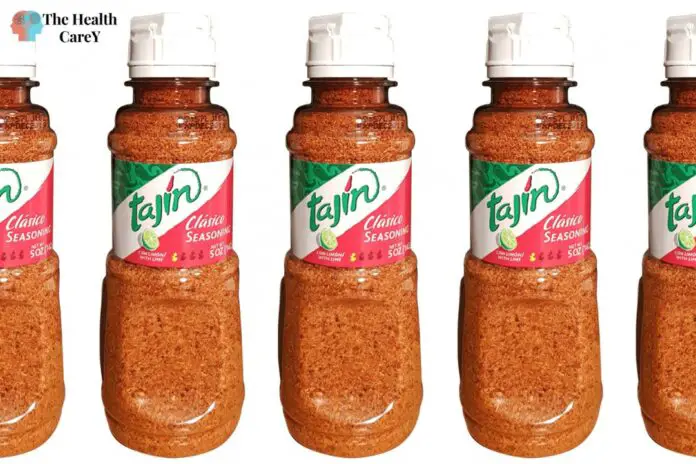Tajin seasoning has become increasingly popular in recent years, with many people using it to add a unique flavor to their dishes. This seasoning is a blend of spices that originates from Mexico and is known for its tangy and slightly spicy taste. If you’re curious about what’s in Tajin seasoning, you’ve come to the right place.
The main ingredients in Tajin seasoning are chili peppers, salt, and dehydrated lime juice. These three components are combined to create a unique flavor that is both spicy and tangy. In addition to these primary ingredients, Tajin seasoning may also contain other spices such as cumin, garlic, and oregano. The exact blend of spices can vary depending on the manufacturer, but the core ingredients remain the same.
So, if you’re looking to add a little bit of spice and tang to your dishes, Tajin seasoning may be just what you need. With its unique blend of chili peppers, salt, and dehydrated lime juice, this seasoning is sure to add a burst of flavor to any dish.
What is in Tajin Seasoning?
Tajin seasoning is a popular Mexican spice blend that is used to add flavor to a variety of dishes. It is a combination of chili peppers, salt, and dehydrated lime juice. The spice blend is known for its unique flavor profile, which is both spicy and tangy.
Here is a breakdown of the ingredients that are typically found in Tajin seasoning:
- Chili Peppers: The main ingredient in Tajin seasoning is chili peppers. These peppers are dried and ground into a fine powder. They give the spice blend its signature heat.
- Salt: Tajin seasoning contains salt, which helps to enhance the flavor of the other ingredients. The salt used in Tajin is typically sea salt, which has a slightly different flavor profile than table salt.
- Dehydrated Lime Juice: Another key ingredient in Tajin seasoning is dehydrated lime juice. This gives the spice blend its unique tangy flavor. The lime juice is dehydrated and then ground into a powder.
- Other Spices: Tajin seasoning may also contain other spices, such as cumin or garlic powder. These spices can vary depending on the brand and recipe.
Tajin seasoning is a versatile spice blend that can be used in a variety of ways. It is commonly used to season fruits and vegetables, such as watermelon, mango, and cucumber. It is also used as a seasoning for meat, fish, and poultry. In addition, Tajin can be used as a topping for popcorn or mixed into dips and sauces.
Overall, Tajin seasoning is a flavorful and unique spice blend that is a staple in Mexican cuisine. With its combination of chili peppers, salt, and dehydrated lime juice, it adds a spicy and tangy kick to any dish.
Main Ingredients of Tajin Seasoning
Tajin seasoning is a popular Mexican spice blend that adds a tangy and spicy flavor to dishes. The seasoning is made up of a few key ingredients that are carefully selected to create the perfect balance of flavors.
Chili Peppers
The primary ingredient in Tajin seasoning is chili peppers. These peppers are responsible for the spice and heat that the seasoning imparts. The peppers used in Tajin seasoning are typically a blend of dehydrated chili peppers, including guajillo, pasilla, and arbol peppers. These peppers are carefully selected to provide a balanced heat level that is not too overpowering.
Sea Salt
Sea salt is another key ingredient in Tajin seasoning. The sea salt used in Tajin seasoning is harvested from the ocean and is unrefined, meaning that it retains all of its natural minerals and flavor. The salt helps to balance out the heat from the chili peppers and provides a savory flavor to the seasoning.
Dehydrated Lime Juice
The final key ingredient in Tajin seasoning is dehydrated lime juice. The lime juice is carefully dehydrated to preserve its flavor and acidity. The lime juice adds a tangy and citrusy flavor to the seasoning that complements the heat from the chili peppers and the saltiness from the sea salt.
Overall, Tajin seasoning is a blend of three simple ingredients that work together to create a unique and flavorful seasoning. The combination of chili peppers, sea salt, and dehydrated lime juice provides a balance of heat, saltiness, and tanginess that is perfect for adding flavor to a wide variety of dishes.
Culinary Uses of Tajin Seasoning
Tajin seasoning is a versatile spice blend that can be used to enhance the flavor of a variety of dishes. Here are some culinary uses of Tajin seasoning:
Fruits and Vegetables
Tajin seasoning is a popular choice for adding flavor to fruits and vegetables. It can be sprinkled on sliced cucumber, mango, watermelon, and pineapple for a tangy and spicy kick. Tajin seasoning can also be used to add flavor to grilled vegetables such as corn, peppers, and zucchini.
Meats and Seafoods
Tajin seasoning is a great way to add flavor to meats and seafood. It can be used as a rub for chicken, beef, and pork, or sprinkled on top of fish and shrimp. Tajin seasoning can also be used to add flavor to grilled or roasted meats.
Snacks and Beverages
Tajin seasoning can be used to add flavor to a variety of snacks and beverages. It can be sprinkled on popcorn, nuts, and chips for a spicy kick. Tajin seasoning can also be used to rim the glass of a cocktail or beer for a tangy and spicy twist.
Overall, Tajin seasoning is a versatile spice blend that can be used to enhance the flavor of a variety of dishes. Its unique blend of chili peppers, lime, and salt make it a popular choice for adding a tangy and spicy kick to your favorite foods.
Tajin Seasoning Nutritional Information
Tajin seasoning is a low-calorie seasoning that is often used to add a spicy and tangy flavor to various dishes. It is made up of a blend of chili peppers, salt, and dehydrated lime juice. Here is some nutritional information about Tajin seasoning.
Calories
One serving of Tajin seasoning, which is approximately 1/4 teaspoon, contains only 1 calorie. This makes it an excellent choice for those who are watching their calorie intake.
Sodium
Tajin seasoning contains 190 milligrams of sodium per serving. While this is not a significant amount, it is important to keep in mind if you are on a low-sodium diet.
Vitamin C
Tajin seasoning is an excellent source of vitamin C, with one serving providing 10% of your daily recommended intake. Vitamin C is an essential nutrient that helps support a healthy immune system.
Other Nutrients
Aside from the nutrients mentioned above, Tajin seasoning does not contain any significant amounts of other vitamins or minerals. However, it is important to note that the chili peppers in the seasoning may provide some health benefits, such as boosting metabolism and reducing inflammation.
Overall, Tajin seasoning is a low-calorie and flavorful seasoning that can be a great addition to your meals. However, as with any seasoning, it is important to use it in moderation and be mindful of your overall sodium intake.

Cultural Significance
Tajin seasoning is more than just a popular spice blend; it has significant cultural importance as well. Tajin is a product of Mexico and is widely used in Mexican cuisine. It is named after the ancient city of Tajin, which was once the capital of the Totonac civilization located in the state of Veracruz, Mexico. The Totonac people were known for their unique cuisine and their use of chili peppers, which are a key ingredient in Tajin seasoning.
In Mexico, Tajin seasoning is often used to add flavor and spice to fresh fruit such as mango, watermelon, and pineapple. It is also used to season meat, fish, and vegetables. Tajin is so popular in Mexico that it is often referred to as the “Mexican salt” and is a staple in most Mexican households.
The cultural significance of Tajin seasoning extends beyond Mexico. In recent years, Tajin has gained popularity in the United States and other parts of the world. It is now a common ingredient in many international dishes, and its unique flavor has made it a favorite among food enthusiasts.
Tajin seasoning has become a symbol of Mexican culture and cuisine. Its popularity has helped to introduce people from all over the world to the rich and diverse flavors of Mexican cuisine. Whether you are a seasoned chef or a novice cook, Tajin seasoning is a must-have ingredient in your pantry.
Frequently Asked Questions
What are the primary ingredients of Tajin seasoning?
Tajin seasoning is made up of three main ingredients: chili peppers, salt, and dehydrated lime juice. Other ingredients may include silicon dioxide, which is an anti-caking agent, and sugar.
In what ways can Tajin seasoning be used in cooking?
Tajin seasoning is a versatile spice blend that can be used in a variety of ways. It can be sprinkled on fresh fruit, vegetables, and salads to add a tangy and spicy flavor. It can also be used as a rub for meats and seafood before grilling or roasting. Additionally, Tajin seasoning can be added to marinades, sauces, and dips.
Are there any health benefits associated with using Tajin seasoning?
Tajin seasoning is low in calories and contains no fat or cholesterol. It is also a good source of vitamin C, which can help boost the immune system. However, Tajin seasoning does contain a significant amount of sodium, so it should be used in moderation.
How would you describe the flavor profile of Tajin seasoning?
Tajin seasoning has a unique flavor profile that is both tangy and spicy. The lime juice provides a tartness, while the chili peppers add a subtle heat. The salt helps to bring out the flavors of the other ingredients.
Can you recommend a substitute for Tajin seasoning if it’s not available?
If Tajin seasoning is not available, you can make your own by mixing together chili powder, salt, and lime zest. Alternatively, you can use a combination of chili powder and lime juice or vinegar.
What types of dishes is Tajin seasoning commonly added to?
Tajin seasoning is commonly added to Mexican and Latin American dishes, such as tacos, ceviche, and guacamole. It can also be used to season grilled meats, roasted vegetables, and fruit salads.
Also Read:
Does Sprite Help with Sore Throat?
Does Chewing Gum Help Jawline?





















